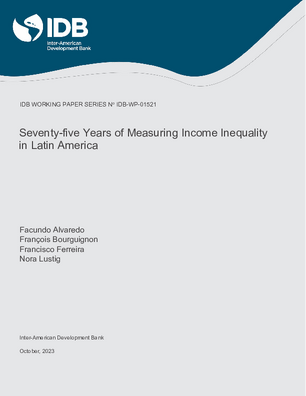Seventy-five Years of Measuring Income Inequality in Latin America
Date
Oct 2023
Drawing on a comprehensive compilation of quantile shares and inequality measures for 34 countries, including over 5,600 estimated Gini coefficient, we review the measurement of income inequality in Latin America and the Caribbean over the last seven decades. Although the evidence from the first quarter century roughly until the 1970s is too fragmentary and difficult to compare, clearer patterns emerge for last fifty years. The central feature of these patterns is a broad inverted U curve, with inequality rising in most countries prior to the 1990s, and falling during the early 21st Century, at least until the mid-2010s, when trends appear to diverge across countries. This broad pattern is modified by country specificities, with considerable variation in timing and magnitude. Whereas this broad picture emerges for income inequality dynamics, there is much more uncertainty about the exact levels of inequality in the region. The uncertainty arises from the disparity in estimates for the same country/year combinations, depending on whether they come from household surveys exclusively; from some combination of surveys and administrative tax data; and on whether they attempt to scale income aggregates to achieve consistency with National Accounts estimates. Since no single method is fully convincing at present, we are left with (often wide) ranges, or bands, of inequality as our best summaries of inequality levels. Reassuringly, however, the dynamic patterns are generally robust across the bands.




